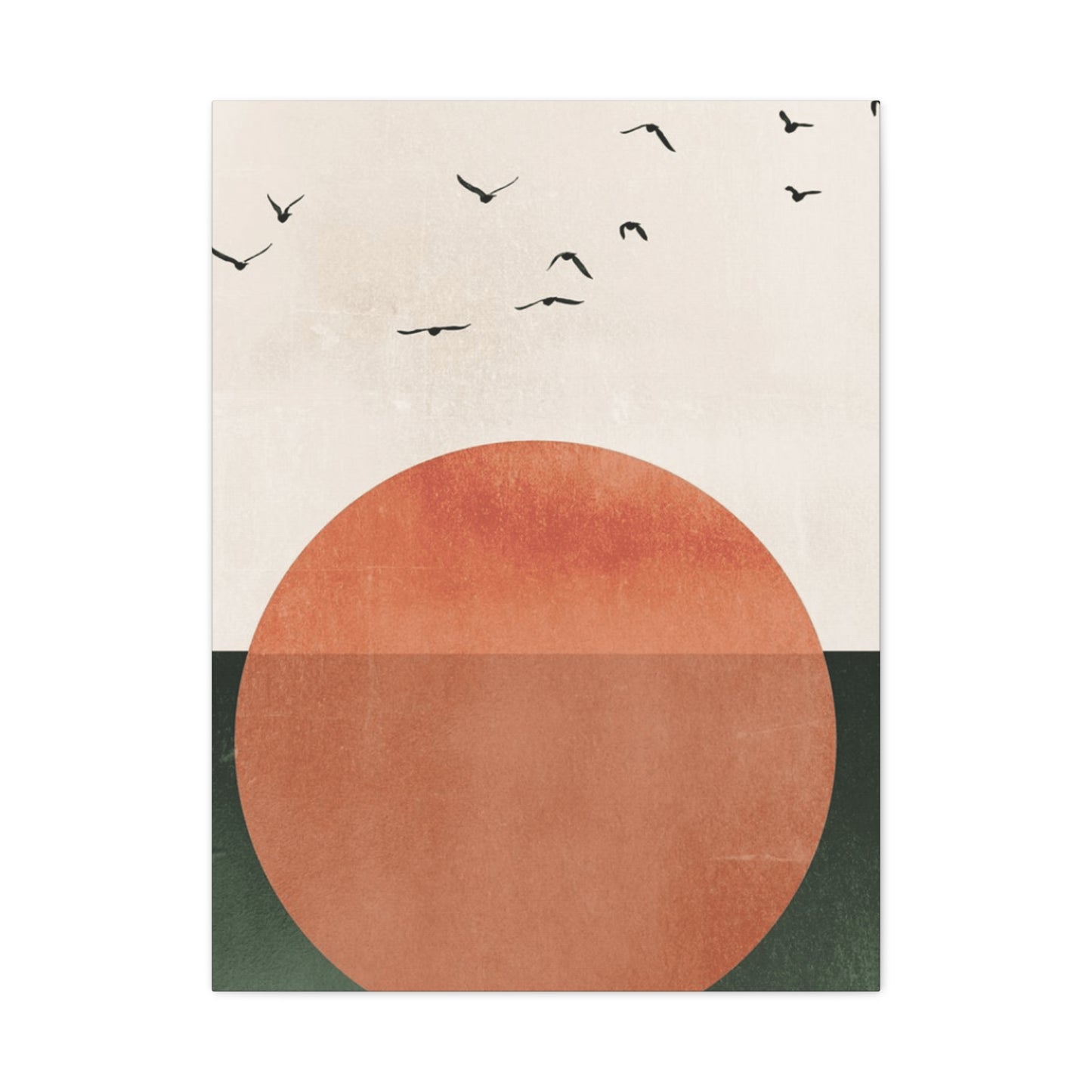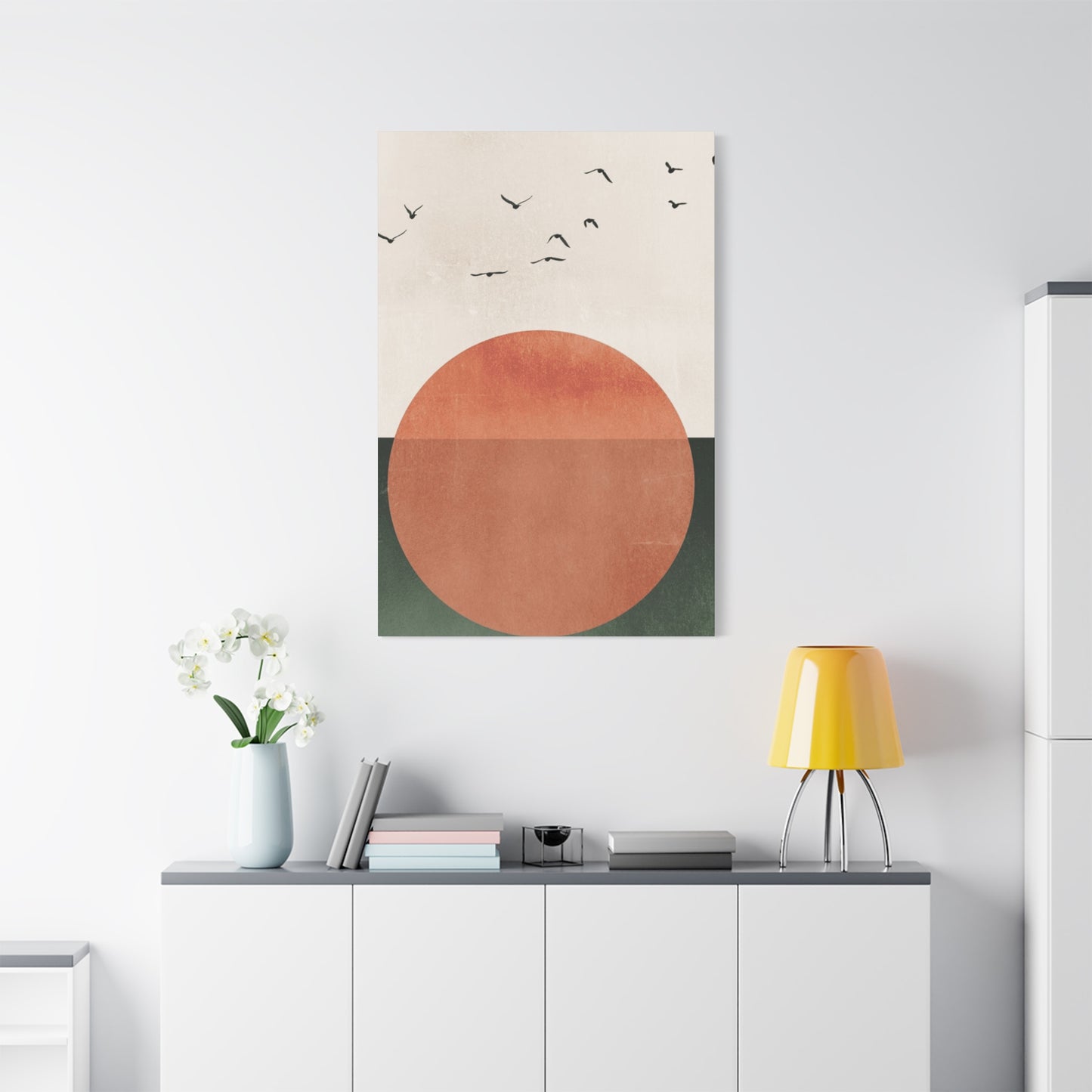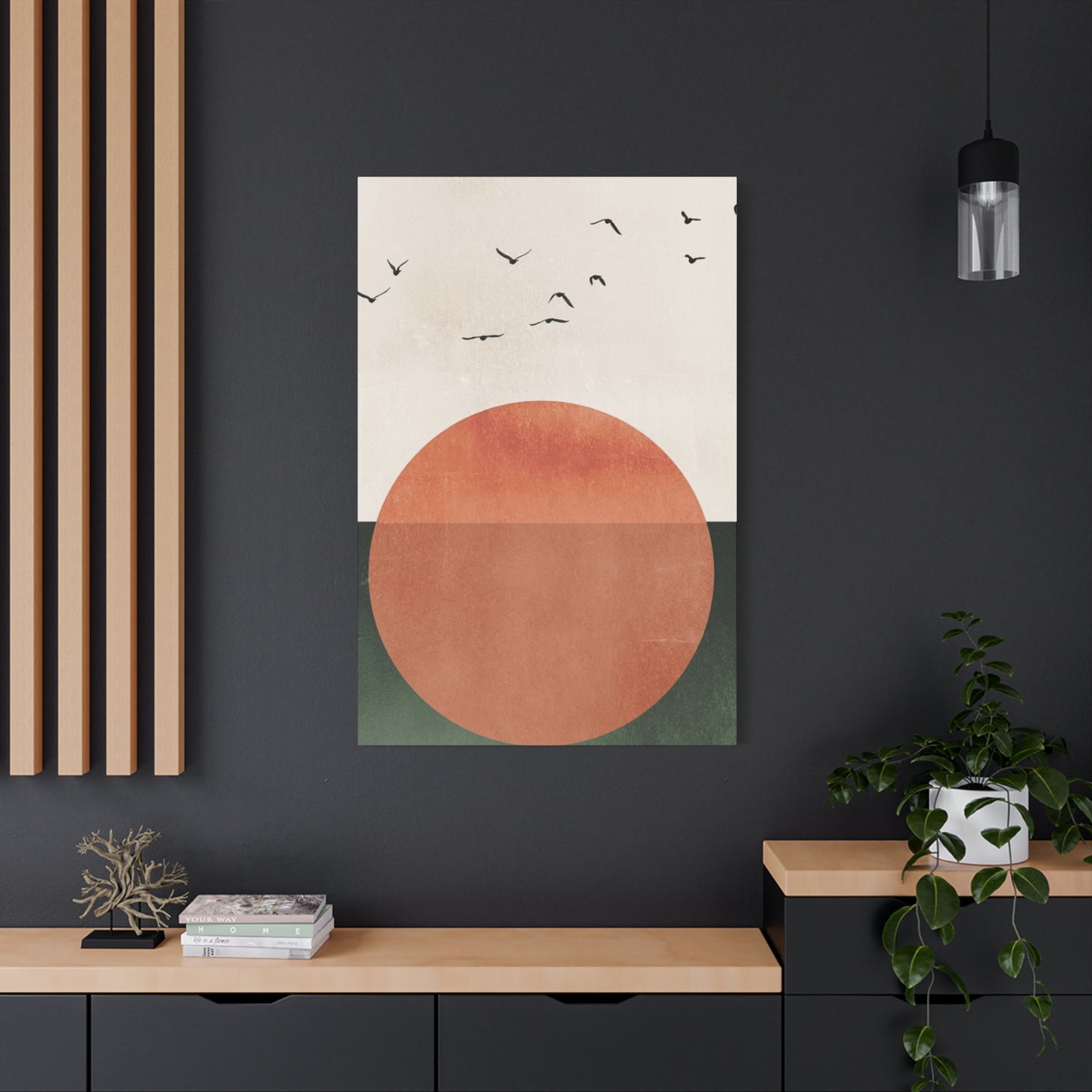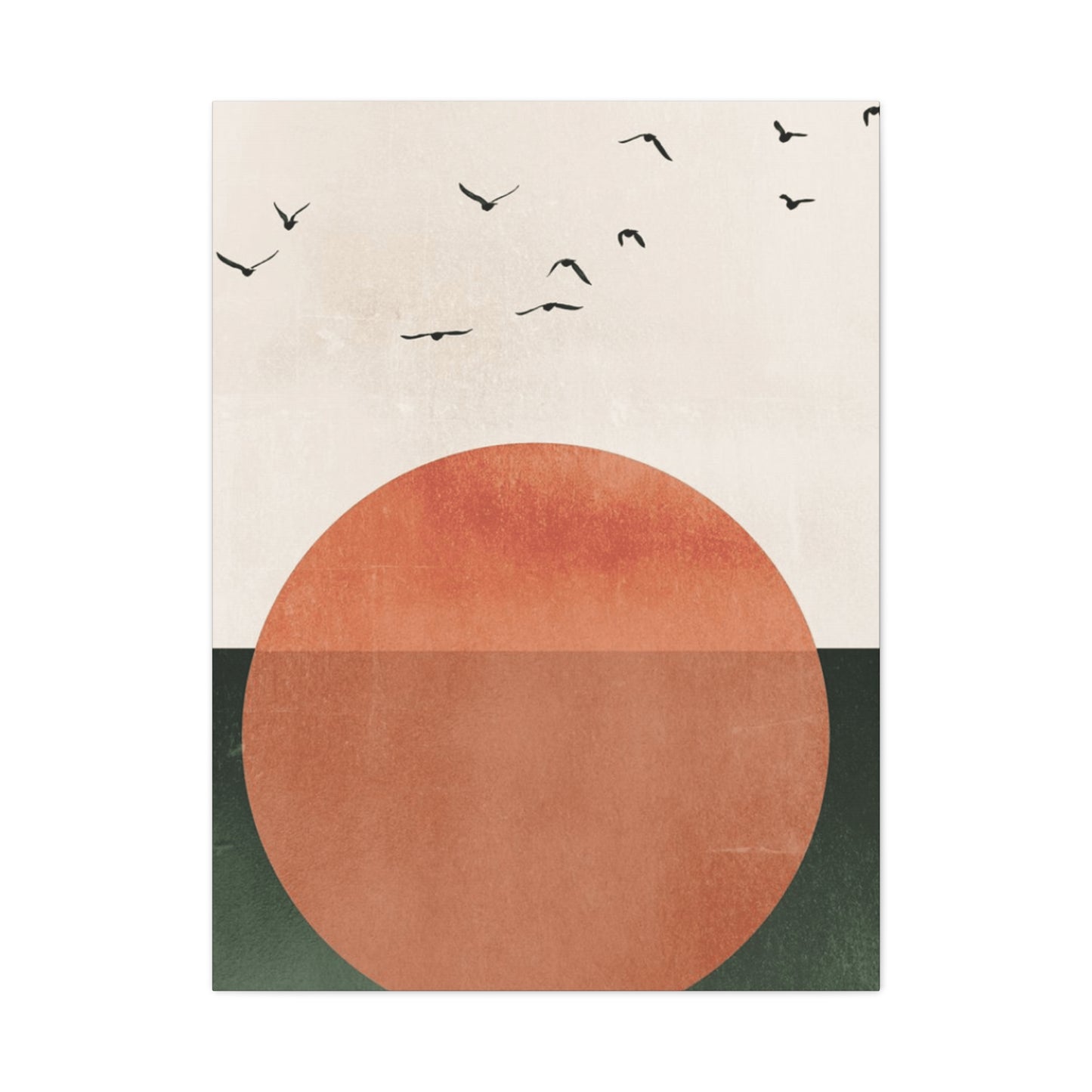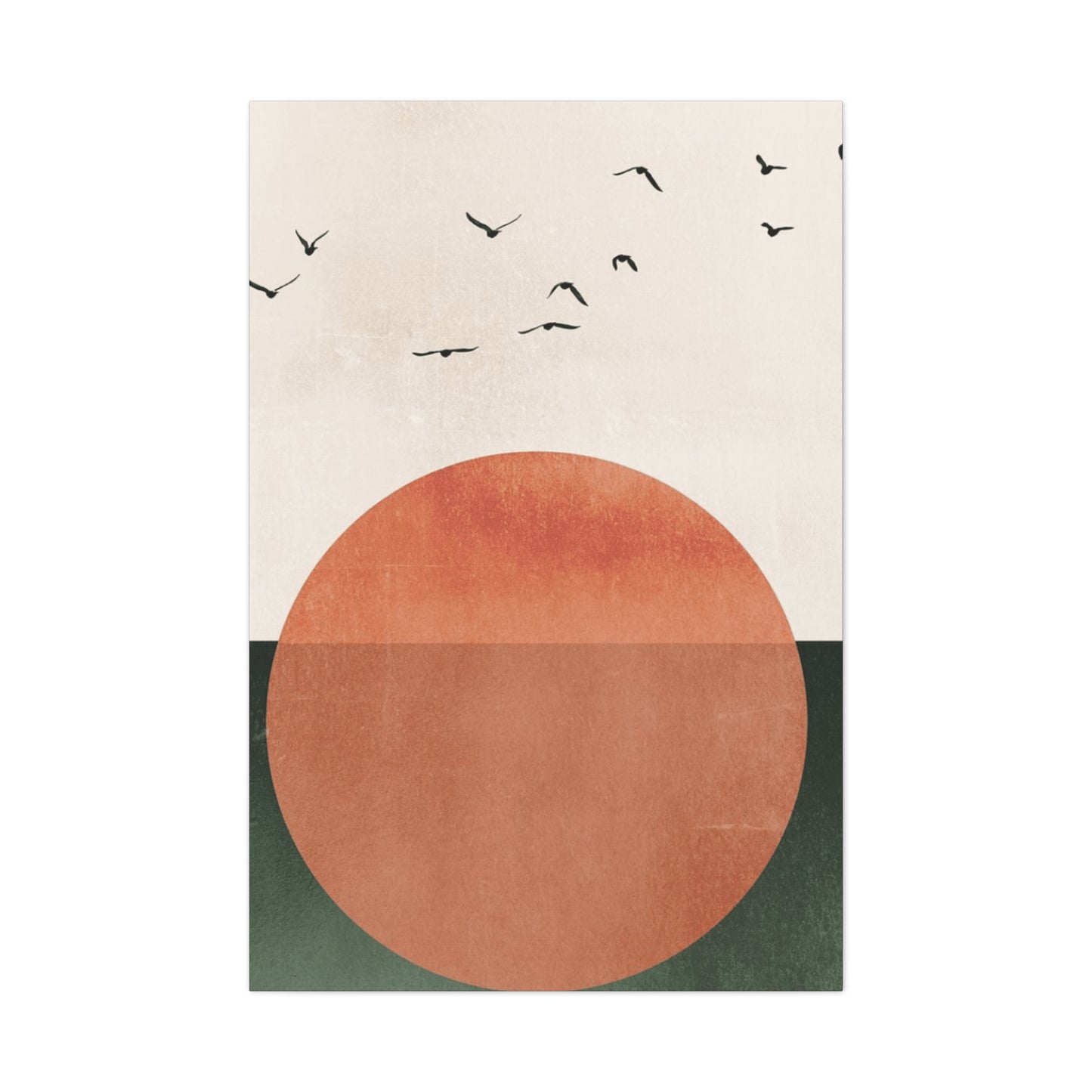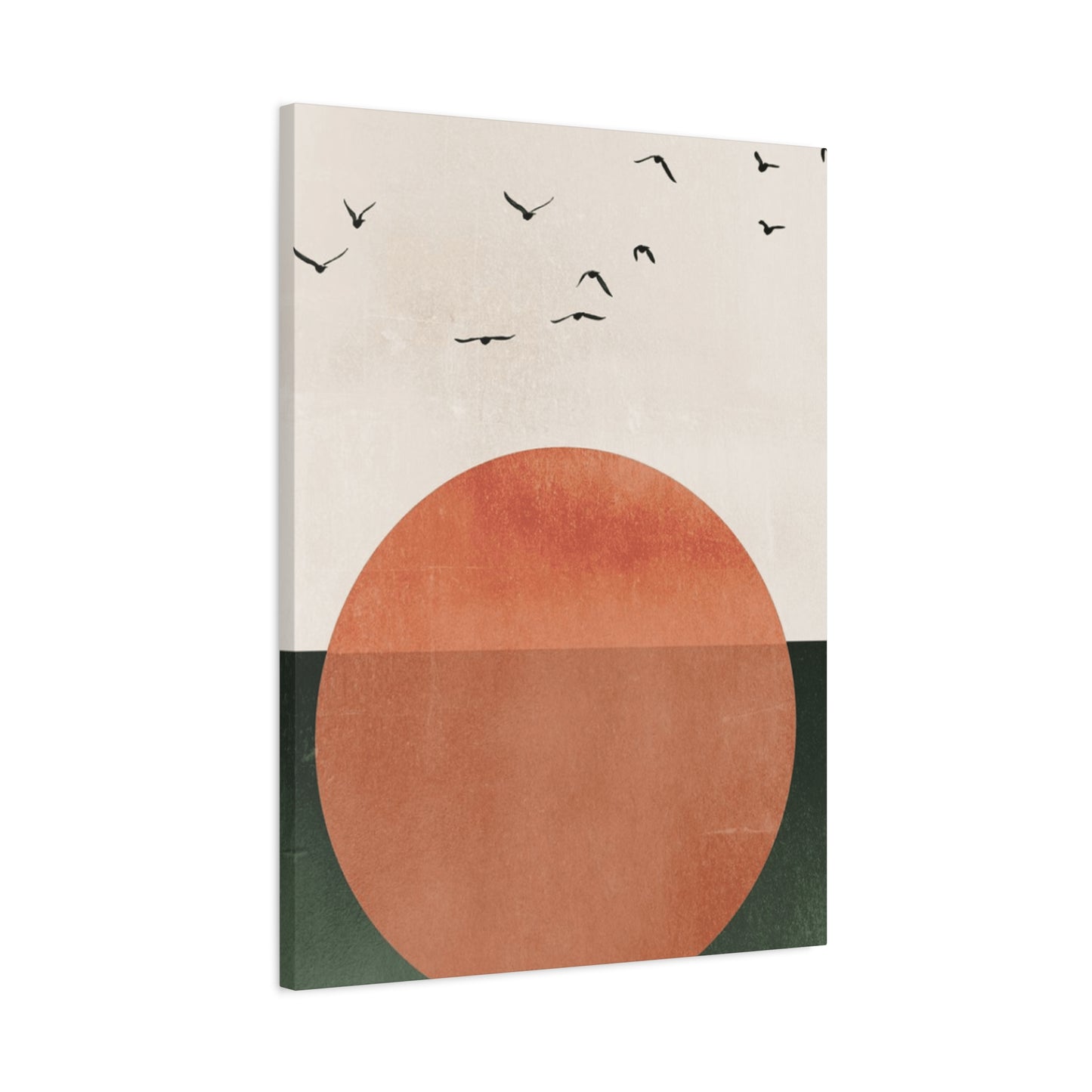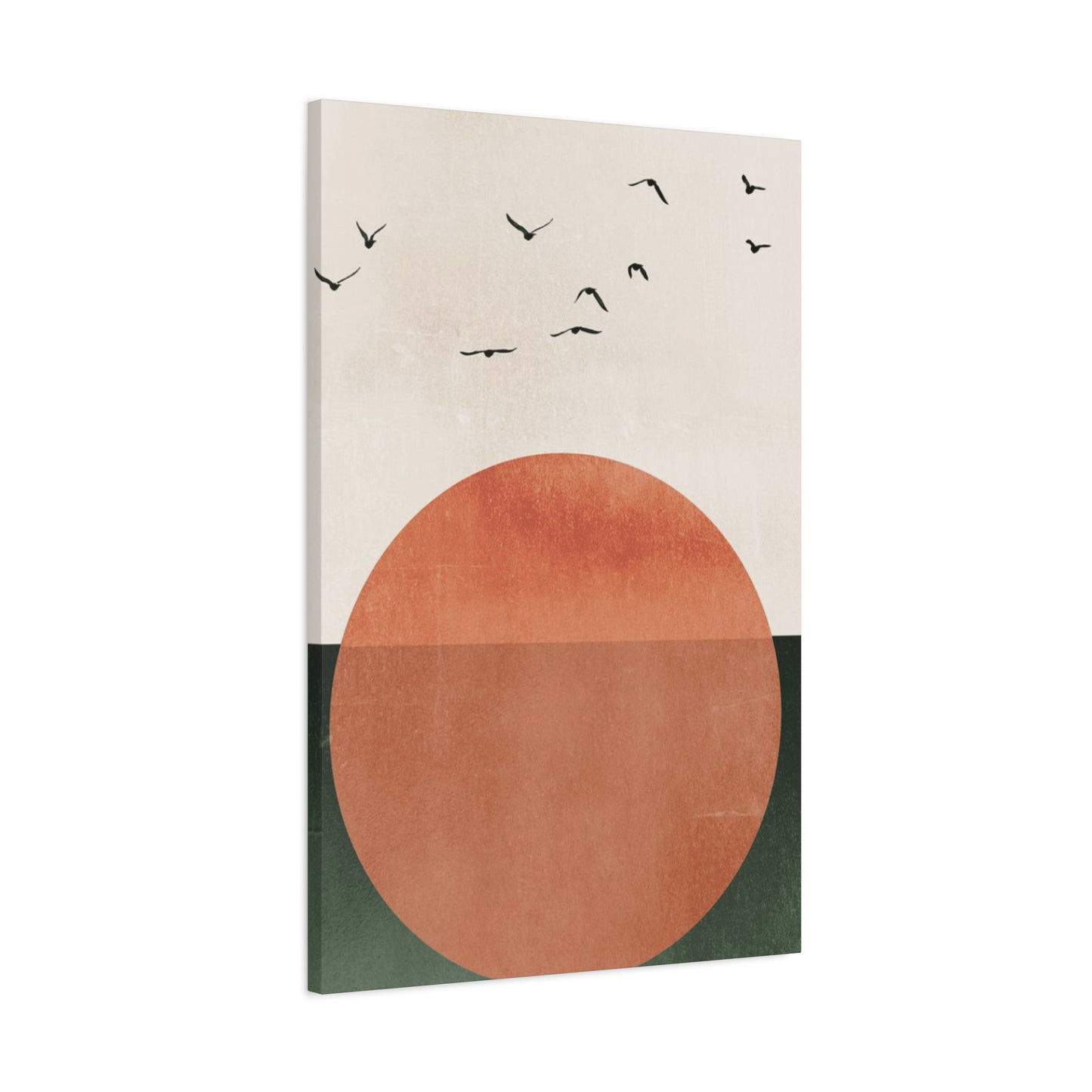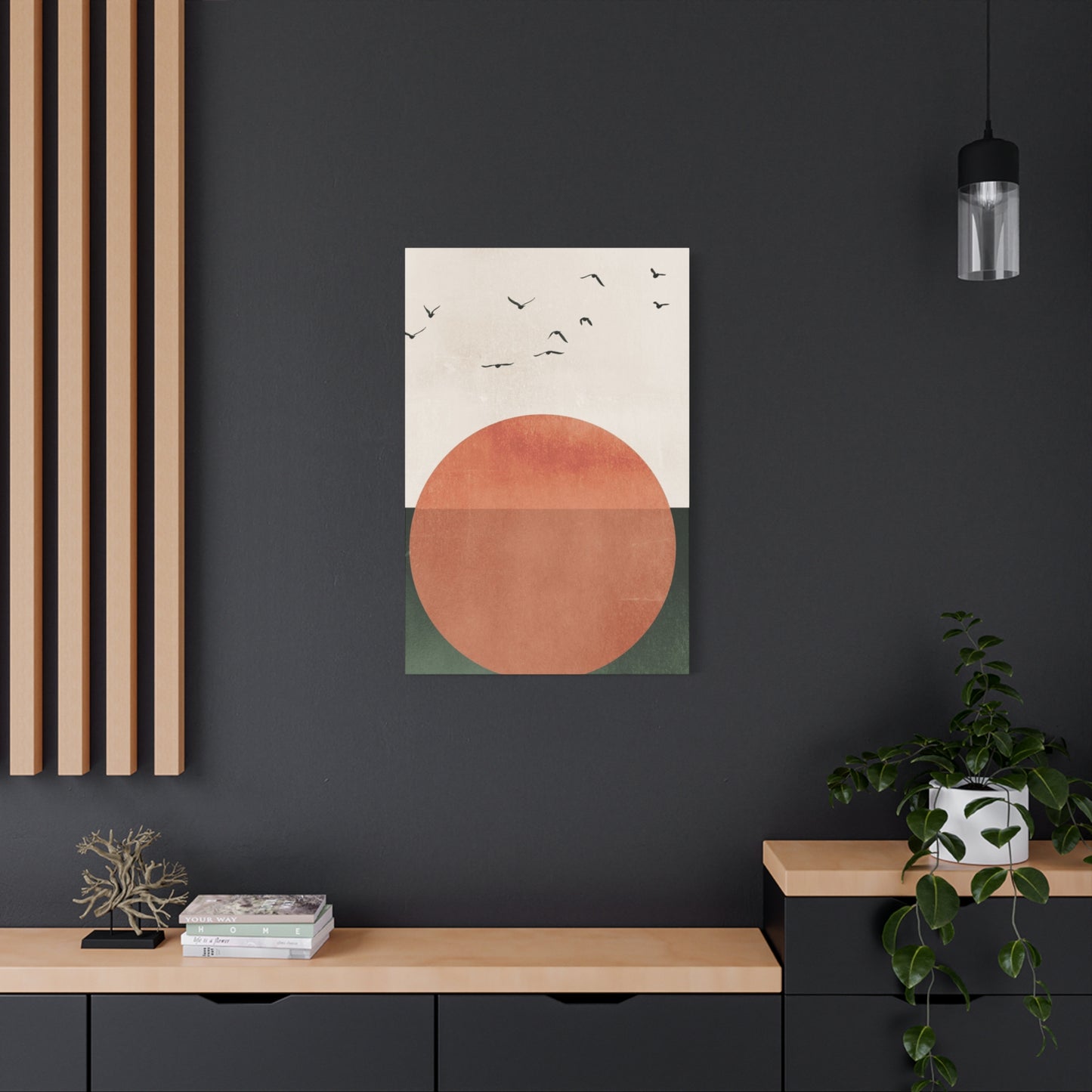Illuminate Your Living Space with Radiant Sun and Birds Wall Art Décor
The integration of natural elements into interior design has become increasingly popular among homeowners seeking to create spaces that reflect tranquility, vitality, and connection to the outdoors. Among the most captivating choices for wall decoration are designs featuring celestial orbs paired with avian imagery. This combination brings together two powerful symbols from nature that have inspired artists and decorators for centuries. When you incorporate these elements into your home, you create an atmosphere that celebrates both the warmth of daylight and the graceful freedom of winged creatures soaring through open skies.
These decorative pieces serve multiple purposes beyond mere aesthetics. They function as focal points that draw the eye, conversation starters that spark meaningful discussions, and mood enhancers that influence the emotional atmosphere of any room. The visual impact of these designs ranges from subtle and calming to bold and energizing, depending on the artistic style, color palette, and composition chosen. Whether rendered in abstract forms, realistic depictions, or stylized interpretations, these artworks consistently deliver a sense of optimism and natural beauty that resonates with people across different age groups and design preferences.
The versatility of this décor theme allows it to complement various interior design styles, from contemporary minimalism to rustic farmhouse aesthetics. Homeowners appreciate how these pieces can be adapted to suit different rooms, color schemes, and functional spaces throughout the residence. The enduring appeal lies in the universal recognition of these natural symbols and their positive associations with hope, renewal, and the beauty of the natural world. As we explore the many dimensions of this decorating approach, you'll discover practical insights for selecting, displaying, and maximizing the impact of these meaningful artistic elements in your personal space.
The Deep Meaning Behind Celestial and Avian Imagery in Home Decoration
Throughout human history, cultures worldwide have attributed profound significance to both solar imagery and representations of flying creatures. The glowing orb that lights our days has been worshipped, celebrated, and symbolized in countless ways across civilizations. It represents life-giving energy, growth, warmth, and the cycle of renewal that occurs with each dawn. When this powerful symbol appears in home décor, it carries these associations into your living environment, subtly influencing mood and perspective. The psychological impact of such imagery extends beyond conscious awareness, tapping into deep-seated human responses to light and natural cycles.
Feathered creatures that take flight have equally rich symbolic meanings across different traditions and belief systems. They represent liberation from earthly constraints, the ability to rise above challenges, and the perspective that comes from viewing situations from a higher vantage point. Different species carry specific meanings in various cultures, but the general concept of airborne creatures universally suggests transcendence, hope, and the connection between earth and sky. When you place these images in your home, you invite these qualities into your daily experience, creating subtle reminders of possibility and potential.
The combination of these two elements creates a particularly powerful visual narrative. The interaction between the glowing celestial body and the creatures in flight suggests harmony between cosmic forces and living beings. This relationship speaks to themes of guidance, journey, awakening, and the rhythm of nature. Morning scenes depicting the rising orb with creatures beginning their daily flights evoke feelings of fresh starts and new opportunities. Evening compositions featuring the setting orb with creatures returning home suggest completion, rest, and reflection. These temporal associations add layers of meaning that can align with the function and mood of different rooms in your residence.
Color symbolism plays an essential role in how these pieces communicate their deeper meanings. Golden hues suggest prosperity, warmth, and positive energy. Orange tones evoke enthusiasm, creativity, and emotional warmth. Yellow shades represent optimism, clarity, and intellectual energy. When combined with the blues and whites often associated with sky and clouds, these warm colors create dynamic contrast that stimulates visual interest while maintaining balance. The careful selection of color palettes in your chosen artwork can amplify specific symbolic meanings that resonate with your personal values and aspirations.
The cultural universality of these symbols makes them accessible to diverse audiences while allowing for personal interpretation. Unlike imagery that requires specific cultural knowledge to appreciate fully, these natural elements speak a visual language understood across boundaries. This quality makes such artwork excellent choices for homes where multiple generations gather or where guests from various backgrounds visit. The imagery facilitates connection without requiring explanation, creating common ground through shared appreciation of nature's beauty. This inclusive quality enhances the welcoming atmosphere of any space where these pieces are displayed.
The Psychological Impact of Freedom-Evoking Imagery
The human response to images of flight and open skies connects to fundamental psychological needs and desires. Research in environmental psychology demonstrates that visual connections to nature and expansive views contribute to reduced stress levels, improved mood, and enhanced cognitive function. When you cannot access actual windows or outdoor spaces, artwork that depicts these elements provides some of the same psychological benefits. The representation of creatures in flight specifically activates mental associations with freedom, possibility, and escape from limitation. These associations can subtly influence your emotional state throughout the day as you encounter the artwork in your living space.
The concept of psychological freedom extends beyond literal physical movement. It encompasses feelings of autonomy, self-determination, and the absence of oppressive constraints. Visual representations that suggest these qualities serve as constant, gentle reminders of personal agency and potential. In a world where many people experience various forms of stress, obligation, and restriction, having artwork that symbolically represents liberation can provide meaningful emotional support. The effect operates on a subconscious level, creating an environment that feels more open, less confining, and more supportive of personal growth and expression.
The directional movement often depicted in these compositions contributes to their psychological impact. Creatures shown ascending toward or moving across the illuminated orb create dynamic visual pathways that the eye naturally follows. This movement within a static image creates engagement and prevents the artwork from becoming background noise that goes unnoticed. The implied motion suggests ongoing process and change rather than stagnation. This quality can be particularly valuable in spaces where you seek motivation, inspiration, or encouragement to pursue goals and embrace change. The subtle message that movement and progress are natural and beautiful can influence perspective and attitude.
The expansiveness suggested by sky scenes addresses another fundamental psychological need: the desire for spaciousness and the avoidance of claustrophobic confinement. Even in smaller rooms, artwork depicting wide-open skies can create the illusion of expanded space. This perceptual trick works because the brain responds to visual cues about depth and distance, momentarily forgetting the actual physical boundaries of the room. The result is a space that feels larger, more breathable, and less restrictive than its actual dimensions might suggest. This effect can be particularly valuable in urban apartments or other settings where physical space is limited.
The integration of natural elements into indoor environments addresses what researchers call "nature deficit" – the psychological and physical consequences of spending excessive time in built environments disconnected from the natural world. While nothing completely replaces direct contact with outdoor environments, thoughtful incorporation of nature-inspired imagery provides partial compensation. The visual reminder of natural beauty, cycles, and rhythms helps maintain awareness of the larger world beyond walls and screens. This connection supports mental health, reduces anxiety, and fosters a sense of belonging to something larger than individual concerns. The seemingly simple act of hanging such artwork thus serves a deeper purpose in supporting overall wellbeing.
Selecting the Perfect Celestial and Avian Artwork for Your Space
The process of choosing appropriate pieces requires consideration of multiple factors that will determine how successfully the artwork integrates with your existing space and achieves your decorative goals. Size represents one of the most critical decisions. A piece that is too small for the wall space will appear insignificant and fail to make the intended impact. Conversely, artwork that overwhelms the available space can make a room feel unbalanced or chaotic. The general guideline suggests that artwork should occupy approximately two-thirds to three-quarters of the available wall space for proper visual weight. However, this rule allows for flexibility based on the specific composition and surrounding elements.
Color coordination between the artwork and existing room elements determines how harmoniously the piece integrates with its environment. You can approach this in several ways. One strategy involves selecting artwork that incorporates colors already present in the room's palette, creating cohesion through repetition. An alternative approach uses the artwork to introduce complementary or accent colors that add visual interest without clashing with established tones. Consider the dominant colors in your furniture, flooring, window treatments, and other decorative elements when evaluating potential artwork. Bringing fabric swatches or paint samples when shopping for artwork can help ensure compatible color relationships.
The artistic style should align with the overall aesthetic direction of your interior design. Contemporary spaces with clean lines and minimal ornamentation benefit from artwork with similar qualities – perhaps geometric interpretations or simplified silhouettes rather than highly detailed realistic renderings. Traditional interiors might accommodate more ornate frames and classical composition styles. Eclectic spaces offer the most flexibility, allowing for creative mixing of styles as long as some unifying element ties the look together. Understanding the dominant design vocabulary of your space helps narrow the vast array of available options to those most likely to succeed in your particular setting.
The mood and energy level of the artwork should match the intended function of the room. Spaces dedicated to rest and relaxation benefit from compositions with softer tones, gentler movements, and more serene overall impressions. Areas focused on activity, productivity, or social interaction can handle more vibrant colors, dynamic compositions, and energizing visual qualities. Consider the lighting conditions in the room as well. Spaces with abundant natural light can accommodate darker or more muted artwork without the piece disappearing into shadows. Rooms with limited natural light benefit from artwork with lighter tones and higher contrast that remain visible and impactful even in dimmer conditions.
The specific species depicted in avian imagery can add another layer of meaning and personal connection. Some people feel drawn to particular types of creatures based on personal experiences, symbolic meanings, or simple aesthetic preferences. Coastal species work beautifully in beach-themed spaces, while woodland varieties complement rustic or nature-inspired interiors. Tropical species bring exotic flair to eclectic or globally-influenced designs. Abstract representations that suggest flight without depicting specific species offer the most versatility, allowing viewers to project their own interpretations and associations onto the imagery. Consider which approach resonates most strongly with your personal connection to nature and your decorative vision.
Revolutionize Your Environment with Luminous Celestial Prints
The transformative power of thoughtfully selected wall décor extends beyond surface-level aesthetics to influence the fundamental character of a space. When you introduce prints featuring radiant solar imagery combined with graceful avian forms, you initiate a shift in how the room feels and functions. The visual interest created by these pieces draws attention upward and outward, encouraging eyes to move beyond furniture and floor-level elements. This upward visual movement creates a sense of lift and elevation that affects the perceived height of the room. Even spaces with standard ceiling heights can feel more spacious and airy when wall décor directs attention toward the upper portions of the walls.
The color temperature introduced through these prints significantly impacts the overall warmth or coolness of your space. Prints dominated by golden, amber, and orange tones add warmth that can make large, cold rooms feel more intimate and inviting. This warming effect proves particularly valuable in spaces with northern exposures that receive limited direct sunlight or in rooms with cool-toned flooring and furnishings that might otherwise feel stark. The psychological warmth provided by these colors influences not just visual perception but actual thermal comfort – people report feeling warmer in rooms decorated with warm colors even when actual temperatures remain constant.
The focal point created by a striking print provides an anchor around which other decorative decisions can organize. Once you establish this central visual element, choices about complementary accessories, furniture arrangement, and color accents become clearer and easier to make. The artwork essentially provides a theme or direction that guides subsequent decorative choices, reducing the overwhelming nature of design decisions. This organizing principle proves especially helpful for those who feel uncertain about their decorating abilities or who struggle to create cohesive looks. The artwork serves as both inspiration and guide throughout the decorating process.
Prints offer practical advantages over original paintings or other artwork forms. The affordability of high-quality prints makes it possible to acquire impressive pieces without significant financial investment. This accessibility opens doors for more frequent updates and changes as tastes evolve or as you redecorate. The lighter weight of prints compared to framed canvases simplifies hanging and reduces concerns about wall damage or structural support. Modern printing technologies produce colors so vibrant and details so crisp that prints rival the visual impact of original works while remaining budget-friendly. The combination of aesthetic quality and practical advantages makes prints an ideal choice for many decorating situations.
The ability to coordinate multiple prints creates opportunities for more ambitious decorative schemes. Gallery wall arrangements featuring several related prints can transform an entire wall into an artistic statement. Coordinated prints placed in different rooms create visual connections that enhance flow and cohesion throughout the home. Seasonal rotation of prints allows you to refresh your space without permanent commitment or significant expense. This flexibility supports the evolving nature of personal taste and lifestyle changes. As your life circumstances, preferences, or design knowledge develop, your ability to adapt your space through simple print changes keeps your environment aligned with your current self rather than trapped in past decisions.
The Soothing Influence of Nature-Inspired Wall Decorations
The capacity of certain images to induce feelings of tranquility and peace has been recognized throughout human history and confirmed through modern scientific research. Nature scenes, particularly those featuring sky elements and living creatures, consistently rank among the most effective categories for promoting relaxation and reducing stress responses. When you incorporate such imagery into your living space, you create an environment that actively supports emotional regulation and mental wellbeing. The mere presence of these calming visual elements provides a resource you can draw upon during stressful moments or challenging days.
The color palettes typically associated with these designs contribute significantly to their calming properties. Blues and soft whites reminiscent of clouds and atmosphere have been proven to lower blood pressure, reduce heart rate, and promote feelings of serenity. When combined with the warmer tones of sunrise or sunset scenes, these cool colors create balance that prevents the coldness sometimes associated with all-blue schemes while maintaining the overall calming effect. The gradual color transitions often depicted in sky scenes – from deep blues to pale yellows to warm oranges – mirror the gentle transitions found in nature that the human nervous system finds inherently soothing.
The absence of sharp, jarring elements in these compositions supports their calming influence. Unlike geometric patterns or busy scenes with multiple competing focal points, nature-inspired artwork typically features flowing lines, gradual transitions, and harmonious relationships between elements. The eye can rest on these images without becoming overstimulated or confused. This visual restfulness translates into mental relaxation. In a world filled with screens, notifications, and competing demands for attention, having artwork that asks nothing of you except peaceful appreciation provides valuable respite. The contrast between the demanding visual environment outside your home and the calm environment within creates sanctuary.
The connection to natural rhythms embedded in these images addresses a fundamental human need for alignment with larger cycles beyond human construction. The rising and setting of the celestial orb represents one of the most consistent, reliable patterns in earthly experience. This predictability provides psychological comfort and security. Artwork depicting these moments of transition – dawn or dusk – captures times of day associated with reflection, beauty, and the pause between activity and rest. These liminal moments carry special significance in many cultures as times for contemplation and connection with something larger than individual concerns. Having visual representations of these meaningful times enriches daily life with subtle reminders of continuity and pattern.
The mindfulness-promoting quality of compelling nature imagery should not be underestimated. In moments when you deliberately pause to really see and appreciate the artwork in your space, you engage in a form of meditation. This conscious attention to present-moment visual experience interrupts the constant stream of thoughts, worries, and plans that occupy mental space. Even brief moments of this visual mindfulness contribute to overall stress reduction and improved emotional regulation. The availability of such moments throughout your day, simply by looking at your walls, means you always have access to a tool for centering and grounding yourself. This accessibility makes the practice more likely to occur regularly and consistently.
Celestial and Avian Elements in Simplified Design Schemes
The popularity of minimalist interior design continues to grow as people seek refuge from the complexity and overstimulation of modern life. This design philosophy emphasizes simplicity, functionality, and the careful curation of possessions rather than accumulation. Within this aesthetic framework, wall décor must earn its place through genuine contribution to the space rather than simply filling empty walls. Artwork featuring natural elements succeeds in minimalist settings because it aligns with core minimalist values while providing necessary visual interest and emotional resonance. The key lies in selecting pieces with clean compositions, limited color palettes, and meaningful subject matter.
Simplified representations that capture the essence of forms without excessive detail work particularly well in these spare environments. Silhouettes of creatures against radiant backgrounds reduce the subject to its most fundamental shapes and relationships. This reduction honors minimalist principles while maintaining visual impact and symbolic meaning. The negative space often featured prominently in such compositions echoes the breathing room emphasized in minimalist interior design. Just as minimalist spaces value empty areas as much as furnished ones, these simplified artworks make deliberate use of blank areas to enhance rather than detract from the featured elements.
Monochromatic or limited color schemes align with minimalist preferences while still providing the psychological benefits associated with nature imagery. A piece rendered entirely in shades of one color family – perhaps blues ranging from navy to pale sky, or warm tones from deep amber to pale cream – maintains visual coherence while offering subtle complexity through value and intensity variations. This approach prevents the potential overwhelming quality of multi-colored pieces while preserving interest through nuanced tonal relationships. The restraint demonstrated in color usage reflects the broader minimalist commitment to intentionality and restraint across all design decisions.
The scale of artwork in minimalist spaces often differs from traditional decorating approaches. Where conventional wisdom might suggest filling wall space with multiple smaller pieces, minimalist aesthetics often favor a single substantial piece that commands attention through size and quality rather than quantity. A large-scale print featuring your chosen subject matter can serve as the sole decorative element on an entire wall, creating drama through simplicity rather than complexity. This approach requires confidence in the selected piece, as it will receive undiluted attention without other elements to share focus. The payoff is a powerful, uncluttered statement that embodies minimalist principles.
The framing choices for artwork in minimalist settings deserve careful consideration. Ornate or detailed frames conflict with the simplified aesthetic and draw attention away from the artwork itself. Simple frames in materials like light wood, black metal, or even frameless mounting preserve focus on the image while providing necessary structure and protection. The frame should essentially disappear, serving its functional purpose without making a decorative statement of its own. This self-effacing quality allows the artwork to integrate seamlessly into the minimalist environment rather than appearing as an awkward addition that fights against the established aesthetic direction.
The Energizing Properties of Radiant Natural Imagery
Beyond creating calm and peace, certain manifestations of nature-inspired artwork possess distinctly energizing and uplifting qualities that can boost motivation, enhance mood, and promote positive outlook. The specific characteristics that distinguish energizing pieces from calming ones include brighter colors, more dynamic compositions, and imagery associated with activity rather than rest. A sunrise scene with creatures launching into flight carries very different energy than a sunset scene with creatures settling to roost. Understanding these distinctions allows you to strategically place artwork that matches the energy level appropriate for different spaces and activities within your home.
The physiological response to bright, warm colors includes increased alertness, elevated energy levels, and enhanced focus. These effects result from the same biological mechanisms that respond to actual daylight, which regulates circadian rhythms and influences energy throughout the day. When you place artwork dominated by golden yellows, vibrant oranges, and luminous light in spaces where you need motivation and drive, you harness these biological responses to support your activities. The visual stimulus acts as a subtle energizer, gently promoting the mental and physical state needed for productive work or active engagement with tasks.
The symbolism of ascent and upward movement contributes to the motivational impact of these pieces. When creatures are depicted rising toward or across the glowing orb, the directional movement suggests ambition, achievement, and progress toward goals. This symbolic narrative operates below conscious awareness, but its influence on mindset and attitude can be significant. In workspaces, home offices, or areas dedicated to creative pursuits, artwork that visually expresses these themes of aspiration and achievement supports the psychological mindset conducive to successful effort. The environmental reinforcement of positive, forward-moving energy complements personal determination and commitment.
The association between light and clarity, illumination and understanding, creates connections between solar imagery and intellectual activity. Phrases like "seeing the light" or "being enlightened" reveal the deep linguistic and conceptual links between light and comprehension. Artwork emphasizing radiant illumination can subtly reinforce mental clarity and sharp thinking. In spaces where focus and concentration matter – study areas, home offices, or reading nooks – the presence of imagery celebrating light and clarity creates environmental support for these cognitive activities. The effect may be subtle, but the cumulative impact of daily exposure to these symbolic associations contributes to an atmosphere that facilitates rather than hinders mental work.
The contrast between energizing and overwhelming requires careful attention. While vibrant colors and dynamic compositions promote energy, excessively busy or chaotic imagery can create stress rather than productive stimulation. The most effective energizing artwork balances visual interest with compositional coherence. There should be movement and vitality without confusion or conflict. The difference between inspiration and agitation lies in this balance. Well-designed pieces capture energy and dynamism while maintaining harmony and visual logic. This successful balance creates the desired energizing effect without the negative consequences of overstimulation that can actually impair rather than enhance performance and mood.
Optimal Placement in Personal Sleeping Quarters
The bedroom serves unique functions that require special consideration when selecting and placing wall décor. This space dedicated to rest, intimacy, and personal retreat benefits from artwork that promotes rather than disrupts these purposes. The choice between energizing and calming interpretations of natural themes becomes particularly important here. Generally, compositions featuring softer colors, gentler movements, and more serene overall impressions work best in sleeping areas. The goal is creating an environment that facilitates the transition from waking activity to restful sleep rather than stimulating continued alertness.
Placement within the bedroom significantly affects impact and function. The wall facing the bed receives primary attention both when entering the room and when reclining in bed. Artwork placed here becomes a focal point that sets the tone for the entire space. Many people favor pieces featuring evening or twilight scenes for this prominent position, as these images suggest the natural progression toward rest that mirrors the bedroom's function. Creatures settling to roost or silhouetted against soft evening colors reinforce rather than contradict the room's purpose. The visual message aligns with the behavioral goals of the space.
The wall above the bed presents both opportunities and challenges. This location provides significant visual impact and makes efficient use of space that might otherwise remain empty. However, safety considerations require secure mounting to prevent any possibility of the artwork falling during sleep. Additionally, the perspective from which you view artwork in this location differs from standard viewing angles. You will see this piece primarily when entering or leaving the bed rather than from reclining positions. Consider how the artwork appears from the doorway and from standing positions near the bed when evaluating potential pieces for this location.
Color considerations in bedroom artwork extend beyond aesthetic preferences to include practical concerns about light reflection and absorption. Very light colors in artwork may reflect ambient light in ways that interfere with darkness needed for optimal sleep. Conversely, artwork with sufficient depth of color contributes to the room-darkening effect desirable in sleeping quarters. The interplay between artwork colors and your bedding, window treatments, and wall colors creates the overall color environment of the room. Achieving harmony between these elements produces a cohesive, restful atmosphere that supports the room's primary function while maintaining visual appeal during waking hours.
Personal meaning and positive association carry particular weight in bedroom artwork selections. This private space allows for more personal expression than public areas where guest preferences might influence choices. Imagery that holds special meaning for you or your partner – perhaps species of creatures with personal significance, or colors and compositions that evoke cherished memories – transforms the artwork from generic decoration into meaningful personal expression. The emotional connection created by personally significant imagery enhances the sense of the bedroom as sanctuary and refuge. This personal dimension adds layers of value beyond pure aesthetics or design principles.
Harmonizing Natural Elements with Warm Color Schemes
The relationship between artwork and surrounding color creates either harmony or discord depending on how thoughtfully these elements are coordinated. Spaces already featuring warm color palettes – reds, oranges, yellows, and warm browns – provide natural settings for artwork celebrating solar themes. The repetition of warm tones between walls, furnishings, and artwork creates visual cohesion that makes the space feel intentional and well-designed. However, the specific approach to this coordination requires nuance to achieve optimal results rather than overwhelming sameness or monotonous repetition.
Tone-on-tone coordination uses variations in intensity and shade of similar colors to create sophisticated layering without high contrast. If your walls feature soft peach tones, artwork with deeper amber and gold tones provides compatible warmth while offering visual interest through value differences. This approach creates rooms that feel wrapped in warmth and cohesion. The subtle variations prevent boredom while maintaining overall harmony. This strategy works particularly well in spaces where you want to emphasize comfort, intimacy, and enveloping warmth rather than dramatic visual statements or high-energy environments.
Strategic contrast within a warm palette prevents monotony while maintaining overall color family consistency. If your space is primarily decorated in warm earth tones, introducing artwork with small amounts of complementary cool tones – perhaps touches of blue or teal in sky or water elements – creates visual relief without abandoning the warm color story. These small contrasting elements prevent the potential stuffiness that can result from unrelieved warmth while still maintaining the overall temperature of the color scheme. The key lies in using contrasting colors as accents rather than dominant elements that would shift the entire color balance.
Metallic accents in frames or within the artwork itself can enhance warm color schemes through their reflective properties and color associations. Gold-toned frames or metallic gold elements within prints amplify warmth and add luxury without introducing new color families. Bronze and copper tones provide similar enhancement while offering slightly different character. These metallic elements catch and reflect light in ways that add dimension and interest to the overall presentation. The living quality of metallic finishes that change with lighting conditions adds subtle dynamism that keeps the space feeling fresh rather than static.
The distribution of warm tones throughout a space requires attention to balance and proportion. If every element features warm colors at similar intensity, the eye has no place to rest and the overall effect becomes overwhelming rather than enveloping. Varying the intensity and saturation of warm tones creates visual hierarchy and prevents color fatigue. Artwork can serve as either the most intense concentration of warm color in an otherwise restrained palette, or it can provide a quieter interpretation of warmth that balances more vibrant elements elsewhere in the room. Understanding the role you want the artwork to play in the overall color composition guides your selection process.
Creative Projects for Personalized Natural Décor
The satisfaction of creating your own wall décor extends beyond the pleasure of displaying finished work to include the meditative process of creation itself and the unique personal meaning embedded in handmade pieces. Developing your own interpretations of natural themes allows expression of your specific artistic vision while ensuring completely unique results that cannot be duplicated. The range of techniques accessible to crafters of various skill levels means you can find approaches matching your abilities, available time, and preferred materials. The resulting artwork carries additional emotional value as a product of your own creativity and effort.
Paper cutting techniques offer one accessible approach that produces striking results with minimal equipment investment. The contrast between silhouetted shapes and lighter backgrounds creates dramatic impact similar to expensive professional artwork. Begin with simple outlines of recognizable forms against circular shapes representing the solar orb. As skills develop, incorporate more detailed elements and complex compositions. The meditation-like focus required for careful cutting provides stress relief and creative satisfaction. Framing the finished piece transforms craft project into professional-looking wall décor. Multiple pieces in coordinated sizes can create gallery wall arrangements that showcase both your artistic development and decorative vision.
Painting techniques ranging from simple to sophisticated allow expression of personal color preferences and artistic style. Acrylic paints on canvas provide accessible entry points for beginners. Start with abstract color fields suggesting sky, then add simplified silhouettes using stencils if free-hand painting feels intimidating. As confidence grows, experiment with blending techniques to create realistic sunrise or sunset color gradations. Adding texture through techniques like dry brushing or palette knife application creates visual interest and professional appearance. The forgiving nature of acrylics allows layering and corrections that support learning through experimentation. Online tutorials provide technical guidance while leaving creative decisions to your personal preferences.
Mixed media approaches combine various materials and techniques for unique textural effects impossible to achieve through single methods. Consider backgrounds created through watercolor or acrylic wash, with silhouettes added through paper collage or fabric applique. Three-dimensional elements like feathers or metallic foils add tactile interest and light-catching properties that change with viewing angle and illumination. This layering of materials and techniques creates depth and complexity that rivals professionally produced artwork. The experimental nature of mixed media encourages creative play and unexpected discoveries that can lead to signature styles reflecting your unique artistic voice.
Digital creation tools democratize art-making by providing virtual equivalents of traditional materials without the mess, expense, or space requirements. Tablet-based drawing programs with stylus input allow creation of original artwork that can be printed at any size desired. Stock photo manipulation programs enable combination and modification of existing images into new compositions reflecting your vision. These approaches suit those more comfortable with technology than traditional art materials. The ability to endlessly revise and experiment without wasting materials reduces creative anxiety and encourages bold experimentation. Print-on-demand services can transform digital files into professional quality prints on various materials, completing the journey from concept to displayed artwork.
Natural Elements in Coastal-Inspired Residences
Homes located near water or designed to evoke coastal atmospheres provide particularly appropriate settings for artwork celebrating natural elements. The thematic connection between marine environments and imagery featuring sky creatures creates natural harmony. Species associated with coastal regions – gulls, pelicans, terns, and other shore dwellers – reference the specific ecosystem surrounding the home while connecting to universal themes of freedom and natural beauty. The color palettes typical of beach-inspired spaces – whites, blues, sandy neutrals – provide perfect backgrounds for artwork incorporating both warm solar tones and cool atmospheric hues.
The nautical color scheme balances cool and warm tones in ways that accommodate both sunrise and sunset interpretations of the theme. Morning scenes with peachy pinks, soft golds, and pale blues complement the crisp whites and navy blues common in coastal décor. These fresh, clean colors enhance the breezy, open feeling central to beach house aesthetics. Evening scenes with deeper oranges, purple-tinged clouds, and richer blues provide warmth that prevents cool-toned spaces from feeling stark while maintaining connection to water and sky. The flexibility in color temperature allows selection of pieces that fine-tune the overall atmosphere according to specific preferences and existing décor elements.
Natural materials common in coastal design – weathered wood, rope, shells, sea glass – can be incorporated into presentation of the artwork for enhanced thematic coherence. Frames made from driftwood or finished to suggest aged, salt-worn surfaces extend the coastal theme beyond the artwork itself into its presentation. Rope hangers replace standard hardware for additional nautical character. Shadow boxes incorporating dimensional elements like shells or sand alongside printed or painted artwork create conversation pieces with enhanced coastal authenticity. These thoughtful details demonstrate commitment to the aesthetic and create more fully realized thematic environments.
The connection between coastal locations and quality of light influences artwork selection for these spaces. Seaside environments often feature particularly beautiful sunrise and sunset displays due to atmospheric conditions, open horizons, and reflective water surfaces. Artwork that captures this exceptional light quality resonates with the lived experience of coastal residents and evokes these magical moments for visitors. Prints or paintings that successfully convey luminous, atmospheric light effects become more than decoration – they serve as reminders of special moments spent watching actual celestial displays. This connection between artwork and lived experience creates deeper meaning and stronger emotional bonds with displayed pieces.
The casual, relaxed lifestyle associated with coastal living influences appropriate style choices for artwork. Overly formal or precious presentations conflict with beach house casualness. Instead, favor approaches that appear effortless and unforced. Gallery-style floating frames in simple white or natural wood maintain focus on the image without fussy elaboration. Unframed canvas prints or images mounted directly to wood panels suit the informal atmosphere. Arrangements that appear organic rather than rigidly symmetrical reflect the irregular forms and relaxed patterns of natural beach environments. The decorating choices throughout coastal homes emphasize comfort and ease over formal perfection, and artwork selections should honor these priorities.
Incorporating Sky and Creature Imagery in Primary Gathering Areas
The living room or family room where household members congregate and guests are entertained requires wall décor that satisfies multiple functions. These spaces benefit from artwork with enough visual interest to serve as conversation starters while avoiding controversial subjects that might alienate visitors with different perspectives. Nature themes provide universal appeal that transcends individual differences in politics, religion, or cultural background. The imagery invites discussion about artistic interpretation, personal experiences with nature, and aesthetic preferences without entering potentially divisive territory. This social function of art in public spaces within the home deserves consideration alongside purely aesthetic factors.
Scale becomes particularly important in these typically larger rooms with substantial wall expanses. Artwork that would appear impressive in a bedroom or office may disappear when placed on the large walls common in living areas. Consider oversized pieces or grouped arrangements that create sufficient visual weight to balance the room's proportions. A single statement piece above the sofa can anchor the entire seating area if sized appropriately. Alternatively, a gallery wall arrangement of multiple related pieces can fill substantial wall area while maintaining coherence through shared themes, colors, or framing styles. The key lies in creating visual impact proportional to the room's scale.
Viewing distance in living areas typically exceeds that in smaller rooms, affecting ideal artwork characteristics. Fine details and subtle elements that delight viewers in close proximity may become invisible from across the room. Bold compositions with clear focal points, strong color contrasts, and simplified forms generally succeed better in spaces where primary viewing occurs from distances of eight to twelve feet. Consider how the artwork appears from various seating positions throughout the room. The piece should maintain visual interest and readability from all likely viewing angles rather than only working from one specific position.
The relationship between artwork and furniture arrangement requires careful coordination. The artwork should enhance rather than compete with conversation areas and furniture groupings. Standard placement positions artwork above and behind the sofa, creating a visual anchor for the seating area. The width of the artwork or arrangement should generally span between one-half and three-quarters of the sofa's width for proportional balance. When placing artwork on walls without major furniture pieces, consider how the piece relates to traffic patterns and sight lines from doorways. The artwork should draw the eye without obstructing movement or creating visual chaos.
Lighting considerations particularly matter in living areas that often serve multiple functions at different times of day. Natural daylight reveals colors and details that may fade in evening light. Conversely, artificial lighting creates different effects depending on bulb temperature and placement. Consider installing picture lights or adjustable track lighting that highlights the artwork while providing ambient illumination for the room. This functional lighting serves dual purposes while ensuring the artwork remains visible and impactful regardless of time of day or whether natural light is available. The investment in proper lighting demonstrates commitment to the artwork and maximizes its contribution to the space.
Final Thoughts:
As we wrap up our exploration of Radiant Sun and Birds Wall Art Décor, it’s clear that this style of artwork offers more than just a beautiful aesthetic—it’s an invitation to bring the natural world into your home, creating a space filled with light, energy, and tranquility. The imagery of the sun, coupled with the freedom of birds, carries a timeless appeal that resonates deeply, filling a room with both warmth and a sense of freedom.
At its core, Radiant Sun and Birds Wall Art Décor taps into the universal human connection to nature. The sun, a powerful symbol of life and vitality, has inspired artists for centuries. Its warmth, brightness, and ever-changing patterns are a reflection of life itself—constantly evolving, yet ever-present. Paired with birds in flight, which symbolize freedom, hope, and transcendence, this type of wall art creates a dynamic energy that lifts the spirit and brings a sense of peace and positivity to any living space.
One of the most beautiful aspects of this artwork is its ability to transform the atmosphere of a room. The radiant sun brings warmth and light to spaces, even on the gloomiest days. Meanwhile, the graceful movement of birds creates a sense of serenity and movement, as if the room itself is alive with energy. Whether you choose a vibrant, fiery sun that fills the room with warmth or a soft, muted sunrise that evokes a calm, peaceful start to the day, the combination of sun and birds can enhance any living area, turning it into a sanctuary of light and calm.
The versatility of Radiant Sun and Birds Wall Art makes it perfect for a variety of spaces and interior styles. In more modern, minimalist spaces, the clean lines and striking symbolism can serve as a focal point, adding a pop of visual interest without overwhelming the room. For more traditional or bohemian designs, the warmth and natural imagery of the sun and birds can complement earthy tones, wood textures, and other natural elements, creating a cozy, inviting atmosphere. Whether you hang it above your sofa, in the dining room, or even as a centerpiece in a bedroom, this wall art can instantly elevate your home’s ambiance.
Beyond the visual appeal, the symbolism behind Radiant Sun and Birds Wall Art brings emotional depth to your space. The sun represents life, energy, and the potential for new beginnings, while birds evoke a sense of freedom and the promise of new horizons. These themes are not just aesthetically pleasing—they resonate with the deeper desire for growth, hope, and renewal that many of us seek in our daily lives. Having this type of artwork in your home can serve as a constant reminder to embrace the beauty of each new day and to find joy in the journey, no matter how challenging it may seem.
Incorporating this type of artwork into your home also brings a connection to the outside world. The sun and birds are universal symbols found in nature, and by placing them on your walls, you’re inviting the beauty and energy of the natural world inside. Whether you live in a bustling city or a quiet countryside, Radiant Sun and Birds Wall Art Décor helps to bridge the gap between nature and your living space, creating a harmonious balance between the two.
In conclusion, Radiant Sun and Birds Wall Art Décor is a vibrant and uplifting choice for anyone looking to infuse their home with warmth, freedom, and positivity. It brings the beauty of nature indoors, offering both visual appeal and emotional resonance. Whether as a focal point or a subtle enhancement, this type of wall art has the power to transform your living space into a serene retreat, filled with light, hope, and boundless possibilities.














